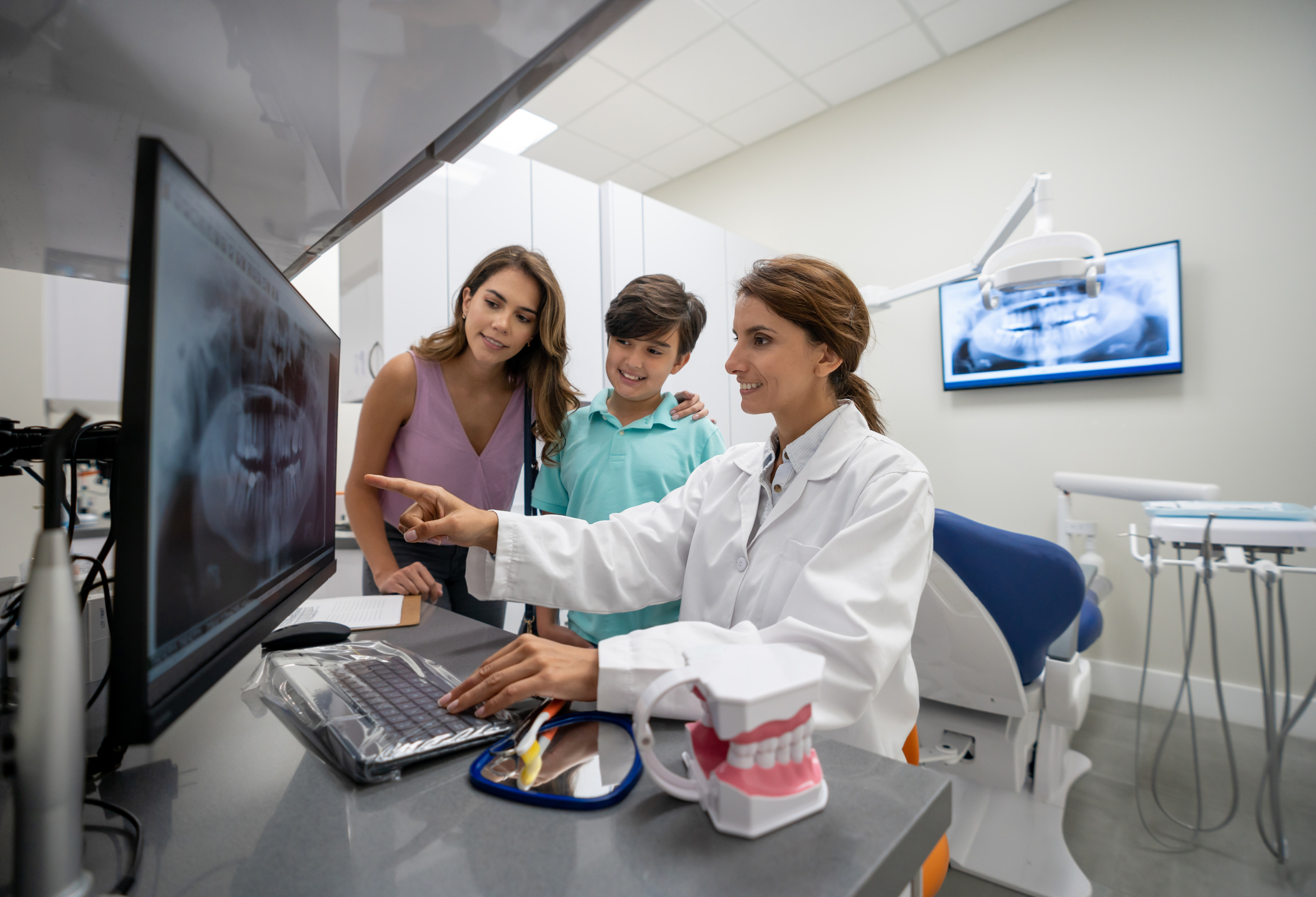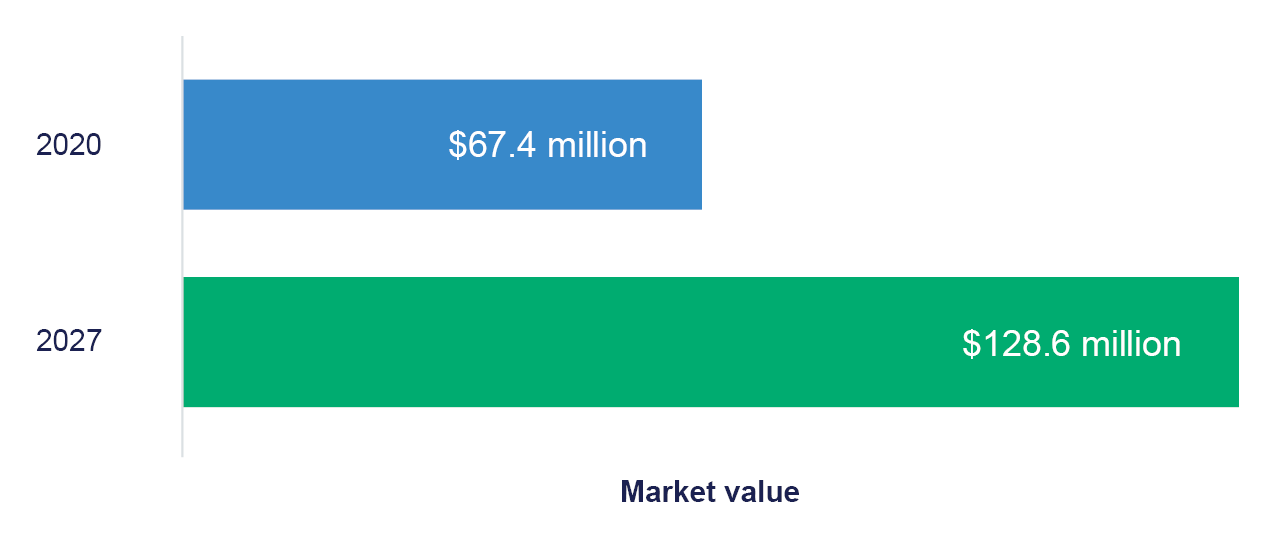How digital technologies are reshaping dental care by significantly improving the patient experience.
Following the acceleration of digital adoption within the healthcare industry in the wake of the pandemic – dental clinics have also sought to innovate their practices through tech-enabled solutions aimed at improved patient experiences and outcomes.
Patients who can’t attend a clinic in person can now undertake their appointments online via video call. Those that can still physically attend their dentist’s office can also have their teeth digitally scanned, with these scans available within minutes to be printed, assessed, and used in that very same appointment.

What’s more, these scans can be emailed to a lab or manufacturer for any required dental restoration work or used by a 3D printer at the clinic that same day.
The increased demand for telehealth services during the pandemic has significantly changed patient experiences and expectations. According to the Australian Digital Health Agency1, 87 million telehealth services have been delivered to 16.2 million patients since March 2020.
This change has also been reflected in dental practices, where the concept of digital dentistry is set to continue growing even as patients return to clinics in-person. Based on findings by iData Research2, the Australian digital dentistry market (which was valued at $67.4 million (USD 46.3 million))* in 2020, is expected to almost double over the next five years to hit $128.6 million (USD 88.3million)# by 2027.
Digitally enabled dental care is no longer a distant concept. It is the here and now.
For current dental practices to thrive in this new era of practice and continue delivering brilliant customer experiences – it is now more critical than ever to invest in digital dentistry technologies. So how do dental practices go about investing in digital dentistry technologies, and what are the benefits?
Digitising the patient experience
As visiting dental clinics in-person during the pandemic became increasingly difficult, patients were required to learn and engage with digital tools and programs to book and attend their appointments. By offering tele-dentistry services via audio and video consultations, many dental practitioners were able to remotely provide diagnosis, dental care, and patient education. This in many cases has been well received by patients, with an Accenture global study3 finding that 60% of surveyed patients wanted to use more of the technology implemented during the pandemic for receiving healthcare.
To meet these growing expectations, dental practices may want to consider investing in ‘digital front doors’ to help streamline the patient journey. This might include creating a digital experience that makes a good first impression on patients in the same way a bricks and mortar clinic would.
This digital front door and care journey can be delivered over cloud-based platforms that can bring together all the touchpoints where dentists digitally interact with their patients. This can help drive better access and engagement to significantly improve the patient experience.
From a well-designed, informative website, and appointment scheduling, to virtual consultations and digital payments, the entire patient journey can be made more intuitive and accessible.
Digital dentistry in Australia

Source: Digital Dentistry Market Size, iData Research
Enhancing the in-clinic experience
Just as a patient and practice interaction is being digitally transformed with remote consultations, digital dentistry tools are also enhancing the in-clinic experience. Intraoral cameras are now replacing many of the instruments traditionally used by dentists to examine patients. Images from these cameras can be magnified onto a screen to help dentists better identify any oral health issues.
Many practices today are also using digital radiography instead of traditional x-rays to instantly view dental images on a screen. This can enable accurate detection of hidden problems for a more thorough diagnosis. The images can then be stored in the cloud and shared easily over the internet with lab technicians. Digital radiography can also offer a more comfortable experience for the patient, with 80% less radiation than traditional x-rays5.
Dentists today are also increasingly designing and manufacturing dental restorations in the clinic itself. By using intraoral scanners, they can make a 3D digital image of a patient’s mouth, which helps design crowns, veneers, or dentures using computer-aided design (CAD)4 technology. These can then be 3D printed with the possibility of the patient receiving the restoration within a day.
Dental care in the digital age
Implementing digital dentistry technologies can significantly improve outcomes for both the practice and patients. Dentists can improve their diagnoses and start treatments early. Reduced waiting times for digital scans and restorations can also help save time and costs, while viewing digital images can help patients feel more involved in their dental care., Importantly, these images can also easily be made available to insurance providers, and other specialists.
According to the Australian Dental Association (ADA)6, adoption of digital health measures in dentistry, especially tele-dentistry, virtual care and e-prescriptions, is still in its early stages. These means dental practitioners who are early adopters of newer digital dentistry technologies have the opportunity to gain a significant advantage over their competitors and deliver an enhanced patient experience.
A strong digital foundation enabled by a high-speed and secure network is critical for dental practices looking to accelerate their digital adoption. nbn’s reliable and scalable network can support the digital transformation goals of dental practitioners across Australia. business nbn fibre initiative also means that more dental practices, in more locations around Australia, have the option to enjoy a business-grade wholesale Enterprise Ethernet+ service.
By connecting to an enterprise-grade network, dental practices can fully embrace digital dentistry technologies and take their patient care to the next level.
Take your digital adoption to the next level
Sources
- Digitalhealth.gov.au: 2021 - challenge and progress
- iData Research: Digital Dentistry Market Size, Share & COVID19 Impact Analysis | Australia | 2021-2027
- COVID-19: Permanently Altering Patient Behavior | Accenture
- Dentaly.org: CAD/CAM Dentistry: What Is It and How Does It Work?
- Emergen Research: Digital X-ray market by System
- Australian Dental Association - NDHS 2022 Submission
* This figure was reported as $US46.3 million in the original report and has been converted to $A67.4 million for this article.
# This figure was reported as $US88.33 million in the original report and has been converted to $A128.6 million for this article.
